The Dallas Cowboys’ receiving group has gotten a lot of ink over the offseason, with the prevailing perception being that there’s still a need at the top of the depth chart for an “alpha” type of receiver. That may or may not be the case, and thankfully with training camp in full swing and preseason games right around the corner, we’re about to receive the answer to the wide receiver question.
They are who they are at this point and the hope is that a group of good players with varying skill sets can help the offense be more efficient in 2018 than it was in 2017. Pro Football Focus Senior Analyst Michael Renner released his NFL Receiving Corp Rankings for 2018 on Tuesday and he had the Dallas Cowboys ranked 29th in the NFL.
Here’s what Renner had to say about the Dallas Cowboys’ wide receiver group:
“The fact that the Cowboys brought in Tavon Austin this offseason should tell you about how bleak their receiving corps looks at this point. There’s some mild hope that either Michael Gallup or Cedrick Wilson can contribute right away as rookies, but it’s rare for third- and sixth-round picks, respectively, to be immediate impact players. Terrance Williams has been a mainstay in the Cowboys lineup the past five seasons despite averaging under 1.50 yards per route over that span.”
Michael Renner – Pro Football Focus
He uses some objective data to justify his ranking, but also there’s a bit of opinion thrown in there as well. Yards per route run (YRR) is a statistic tracked by Pro Football Focus that is just that, the amount of yards the player accounted for divided by the amount of routes they ran that season.
For reference, here are the top five players in YRR from 2017 with at least 50 targets:
- Julio Jones, Atlanta Falcons – 3.0
- Antonio Brown, Pittsburgh Steelers – 2.8
- Keenan Allen, Los Angeles Chargers – 2.5
- Michael Thomas, New Orleans Saints – 2.4
- Tyreek Hill, Kansas City Chiefs – 2.3
Obviously a higher number is better. As you can tell, that’s an elite group of playmakers at the wide receiver position.
Dez Bryant in 2016 had a 1.9 YRR, which was better than his 1.6 YRR in 2017.
The biggest difference between 2016 and 2017 was the major drop off in yards per route run from Cole Beasley. He went from two yards per route run in 2016 to 0.8 in 2017. A reason that Cole Beasley saw a drop off was that he saw more double teams in 2017. Teams realized that he, and not Dez Bryant or Jason Witten, was Prescott’s go-to receiver.
As a team, Pro Football Reference had the Dallas Cowboys ranked as the fifth best group of pass catchers in 2016. In 2017, they dropped all the way down to 25th in the NFL. Now, I get that some of PFF’s grading can be a bit subjective, but there is an objective difference in the Cowboys’ passing game performance from 2016 to 2017. And it wasn’t all on the quarterback.
In yards per routes run, the Dallas Cowboys’ WRs ranked 24th in the NFL in 2017 with 1.22 yards per route run. By comparison, the WR unit had a 1.39 yards per route run in 2016. Their 1.39 YRR in 2016 would have been near the top-10 in 2017. The exact same group of receivers saw a decrease in receiving productivity.
There has been some overhaul to the wide receiver position but it remains to be seen if that is a negative or a positive for 2018 and the future.
While losing Bryant on the surface looks to be a loss, Allen Hurns’ 1.5 yards per route run in 2017 is pretty much the same as Bryant’s 1.6. If we regard Dak Prescott as a better quarterback than Blake Bortles (and I think we do), then we should expect Hurns’ YRR to go up as a member of the Dallas Cowboys.
There are several reasons why the YRR numbers dropped for the Cowboys from 2016 to 2017. One of the biggest reasons is that the offensive line protection declined from 2016 to 2017. Dak didn’t have near as much time to allow plays to develop in 2017 as he did in 2016.
According to Pro Football Focus, Dak’s average time to throw went from 2.71 seconds in 2016 to 2.66 seconds in 2017. Just 0.05 seconds may not seem like much of a difference, but when the play speed is as fast as it is in the NFL, it makes a difference. Now that could be a sign he was getting rid of the ball quicker, but as some of the stats will bear out, he also didn’t have as much time to throw in 2017, relative to 2016.
In 2016, Dak Prescott was pressured on 184 of his 513 drop backs, which was 18th in the NFL. In 2017, he was pressured on 203 of 554 drop backs, which was the ninth most in the NFL that season. That’s only a 1% difference in percent of drop backs pressured, but that doesn’t matter as much as the amount of plays under pressure.
The more you are under pressure as a quarterback, the more you feel the need to do something before the play has developed.
Pressure matters.
Dak also didn’t have as much time in the pocket in 2017 as he did in 2016. From year to year, Prescott saw a 0.07-decrease in the amount of time he had in the pocket. That may seem insignificant, but every bit of time counts when you’re an NFL quarterback.
Pro Football Focus also tracks the amount of time it takes to sack a player as “average time to sack.” In 2016, Prescott’s average time to sack was 3.83, fourth best in the NFL among players with 400 or more passing attempts. In 2017 that number dropped to 3.14, which was 25th in the NFL among players with 400 attempts. So, not only did he get sacked more in 2017, he was getting sacked faster.
That 0.69 seconds is a HUGE difference in the time of a play. Because players weren’t getting open as quickly or as often, Dak Prescott was being forced to hold onto the ball longer in 2017.
When Prescott was able to get rid of the ball in under 2.5 seconds in 2017, he had a quarterback rating of 100.7, good for 12th in the NFL. When he held the ball longer than 2.5 seconds, Dak had a passer rating of 73.3; 21st in the NFL.
His TD:INT ratio was 15:5 when he released the ball in under 2.5 seconds and 7:7 after. What that means to me is that the Cowboys’ wide receivers weren’t getting open with as much regularity in 2017 as they were in 2016. But even if we didn’t look at the numbers, the games revealed that.
The talent along the offensive line was vastly different in 2017 than it was in 2016. Jonathan Cooper was good enough to win games, but he wasn’t nearly as good as the combination of Ronald Leary and La’el Collins at left guard in 2016. Dallas could have brought Cooper back in 2018, but they allowed him to sign for $5 million with the San Francisco 49ers and opted to draft Connor Williams to replace him. That’s an upgrade to the offensive line.
What the stats above point to is what we’ve been saying all along: Dak Prescott didn’t have as much time to throw the ball in 2017.
The wide receiver group didn’t get open as much, which created a less efficient offense. That’s especially true in the second half of the season when Tyron Smith and Ezekiel Elliott missed time. As we’ve discussed at length previously, the drop off from Tyron Smith to Chaz Green/Byron Bell made a huge difference in Prescott’s protection and comfort level.
Prescott didn’t have near as much help in 2017 from his pass catchers when he got the ball on target.
In 2016, Pro Football Focus recorded only 13 on-target passes dropped by Cowboys receivers. That was the second fewest in the NFL among quarterbacks with 400 attempts or more. In 2017, that number skyrocketed to 27, which was the 11th most in the NFL.
Yes, on paper, there isn’t an obvious Julio Jones, Antonio Brown or even prime-Dez Bryant, but it’s not like they are any worse off in 2018 than they were in 2017.
When Tyron Smith was healthy, they won eight games and averaged 25 points per game. When Tyron wasn’t around, they went 1-2 — that win being against the Philadelphia Eagles backups in week 17 — and averaged a little more than seven points per game.
While Dak wasn’t perfect throughout the 2017 season and certainly has some stuff to improve upon, he could have used more help from his offensive line and wide receiver group throughout the season. So perhaps with improvement in the offensive line play and depth, 16 games from Ezekiel Elliott, and some adjustments to the playbook and route combinations, the Dallas Cowboys can get back to the efficient and dominant offense that saw Prescott as one of the better quarterbacks in the NFL in 2016.
While it certainly helps to have an elite wide receiver on your team, you can absolutely win with good ones. The Dallas Cowboys may not have an elite WR, but with Allen Hurns, Cole Beasley, Michael Gallup, and Tavon Austin, they’ve got some good ones.



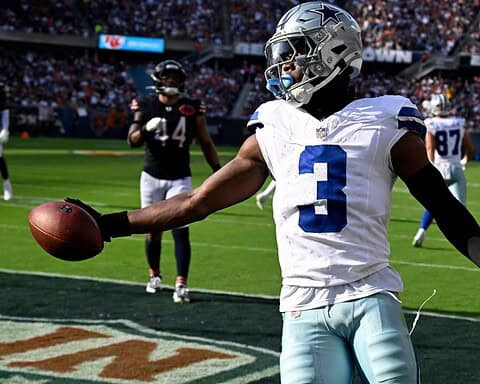
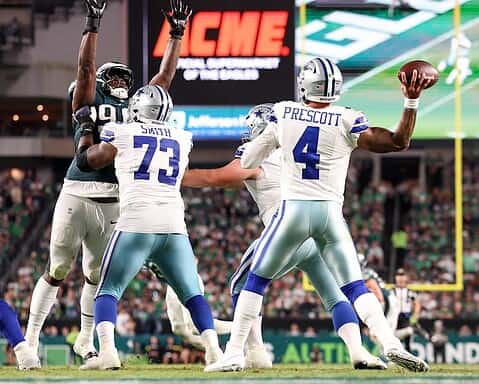

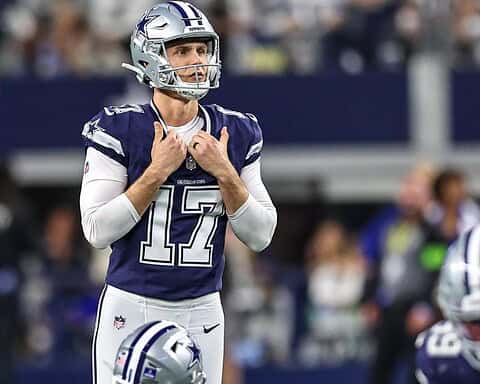

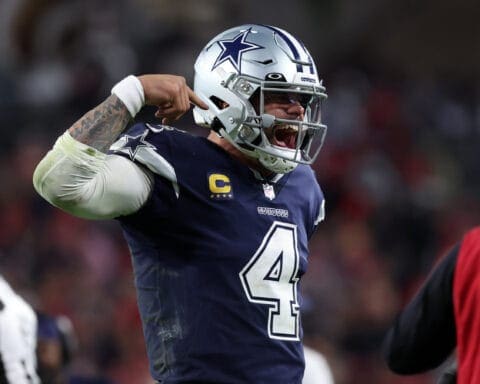
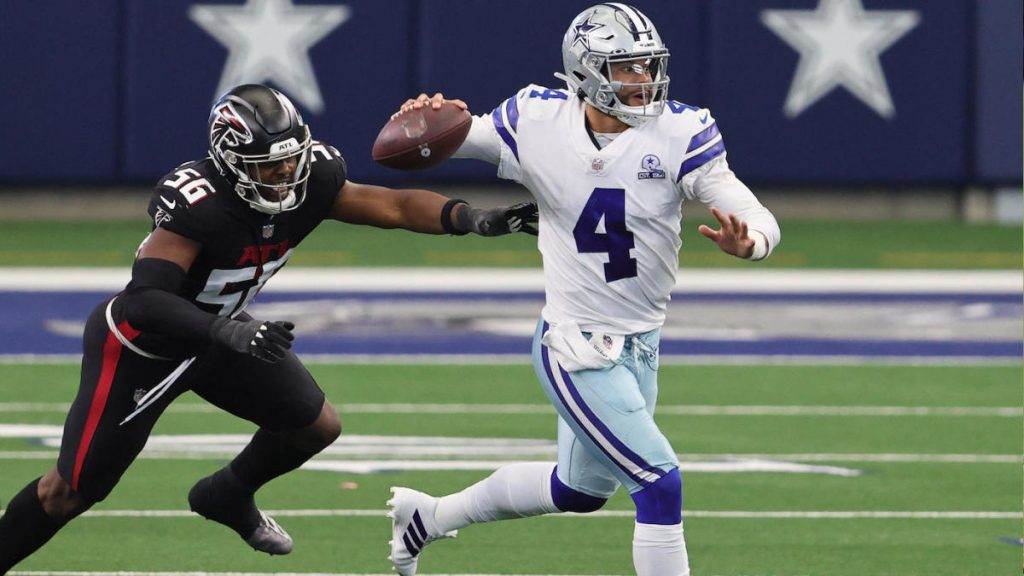
PFF stats are useless in grading any group at a position unless they have at least 3 years of data as a group. Snything else is purely subjective.